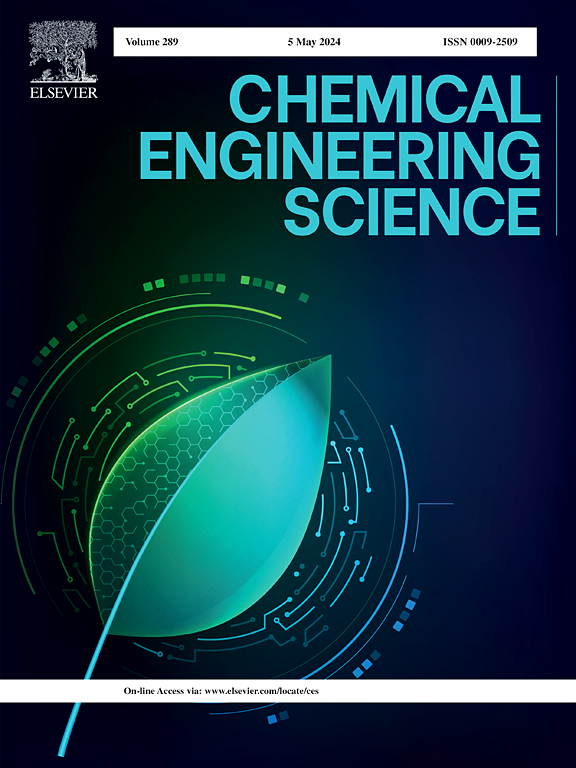Control of PLA chemical structures by using GMA and DCP during reactive processing and its influence on PLA foamability
IF 4.3
2区 工程技术
Q2 ENGINEERING, CHEMICAL
引用次数: 0
Abstract
This study aimed to chemically modify poly(lactic acid), PLA, by reactive processing as a strategy to increase its melt strength, making it viable for producing foams. For this purpose, modification reactions were carried out in a Haake torque rheometer according to a 22 factorial design, where the concentrations of dicumyl peroxide (DCP) and glycidyl methacrylate (GMA) were varied. The levels evaluated were 0.5 and 1.5 phr (peroxide concentration) and 1 phr and 3 phr (GMA concentration). Reference samples with a single reagent were also investigated. The modified PLAs were characterized, and foams were produced by incorporating supercritical CO2 followed by fast depressurization. The results showed that the predominant reactions differed depending on the relative levels of peroxide and GMA, resulting in crosslinking, and/or insertion of branches, and/or linear reactions. Rheological analyses showed that PLA with low levels of peroxide and GMA (PLA_0.5_1) and high levels of both (PLA_1.5_3) displayed a more elastic behavior, which can be correlated to long chain branching formation with longer relaxation times. Consequently, these samples presented smaller cell sizes with homogeneous distribution, while unmodified and less branched PLA foams comprised coalescent and heterogeneous cells with thick walls. The study showed an optimization of the use of reagents once the sample containing the lowest levels of DCP and GMA presented the smallest cell size, attributed to the rheological properties and influence of crystallinity. As far as we know, the correlation between GMA and DCP concentrations on the final cellular structures of PLA foams has never been explored before.


用GMA和DCP控制PLA反应过程中的化学结构及其对PLA发泡性能的影响
本研究旨在通过反应性加工对聚乳酸(PLA)进行化学改性,以提高其熔体强度,使其具有生产泡沫的可行性。为此,根据22因子设计,在Haake扭矩流变仪中进行改性反应,其中过氧化二甘醇(DCP)和甲基丙烯酸缩水甘油酯(GMA)的浓度不同。评估的水平为0.5和1.5 phr(过氧化物浓度)和1 phr和3 phr (GMA浓度)。采用单一试剂的对照样品也进行了研究。对改性聚乳酸进行了表征,采用超临界CO2快速减压法制备了泡沫塑料。结果表明,根据过氧化物和GMA的相对水平不同,主要反应发生交联、分支插入和线性反应。流变学分析表明,低过氧化物和GMA含量的PLA (PLA_0.5_1)和高过氧化物和GMA含量的PLA (PLA_1.5_3)表现出更强的弹性行为,这与长链分支形成和更长的弛豫时间有关。因此,这些样品呈现出更小的细胞尺寸和均匀分布,而未经修饰和较少分支的PLA泡沫由聚结和非均质细胞组成,具有厚壁。研究表明,当含有最低水平的DCP和GMA的样品具有最小的细胞尺寸时,由于流变性和结晶度的影响,可以优化试剂的使用。据我们所知,GMA和DCP浓度对PLA泡沫最终细胞结构的相关性从未被研究过。
本文章由计算机程序翻译,如有差异,请以英文原文为准。
求助全文
约1分钟内获得全文
求助全文
来源期刊

Chemical Engineering Science
工程技术-工程:化工
CiteScore
7.50
自引率
8.50%
发文量
1025
审稿时长
50 days
期刊介绍:
Chemical engineering enables the transformation of natural resources and energy into useful products for society. It draws on and applies natural sciences, mathematics and economics, and has developed fundamental engineering science that underpins the discipline.
Chemical Engineering Science (CES) has been publishing papers on the fundamentals of chemical engineering since 1951. CES is the platform where the most significant advances in the discipline have ever since been published. Chemical Engineering Science has accompanied and sustained chemical engineering through its development into the vibrant and broad scientific discipline it is today.
 求助内容:
求助内容: 应助结果提醒方式:
应助结果提醒方式:


